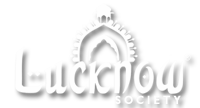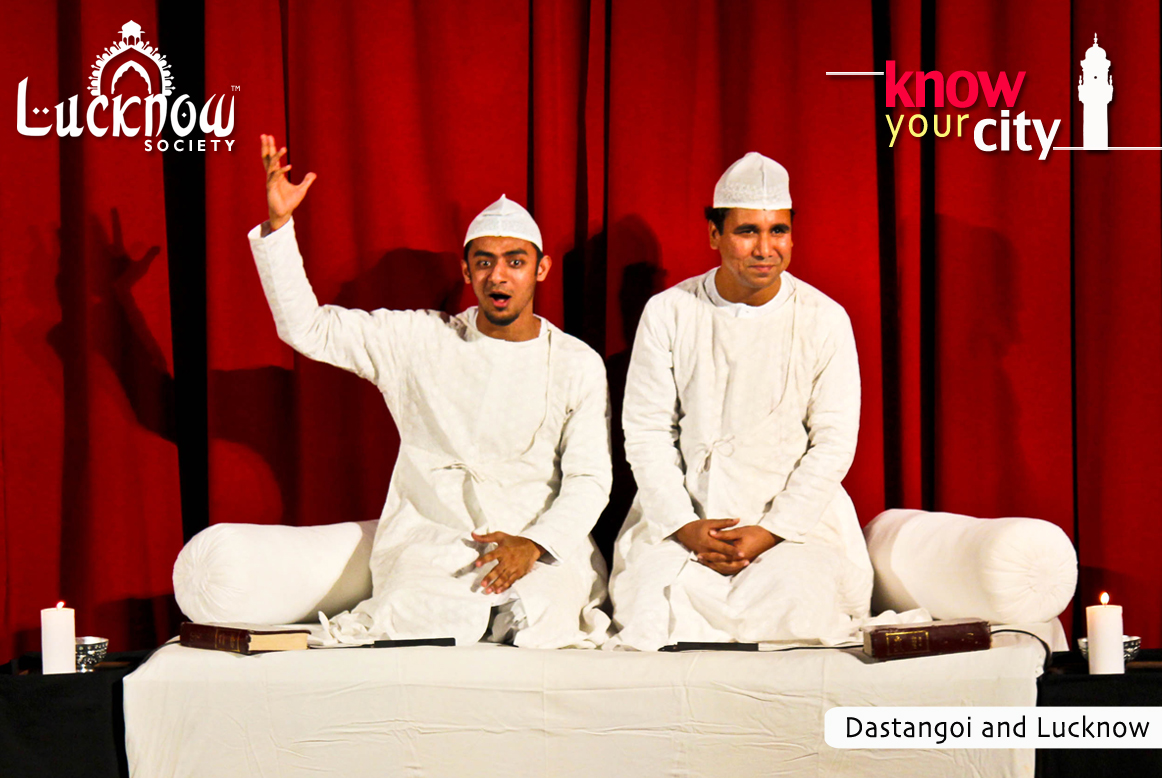Dastangoi aur Lucknow
Abdul Halim Sharar in Guzishta Lucknow calls this art as ‘extemporaneous composition’. The development of Urdu language in Lucknow was not only limited to letters and court culture. Contributions were made at all levels of society which caused the language to improve, broaden and assume new aspects which were sources of interest to all classes. One such effort was Dastangoi, the art of story telling. The Persian word dastangoi is compound to two words dastan and goi which means telling a dastan or story. As we already know India is a land of rich culture and literature, the number of dastans ranges from various fields like: war, pleasure, beauty, love and deception. The art of Dastangoi is like painting pictures by barely using words and expression, and the ability to make a deep rooting connection with the audience which was once lost, is regaining its popularity. It is believed that this art actually originated in Arabia when in pagan times assemblies were held for telling of tales. Even though dastans had many principles and many stories, ‘The tale of Amir Hamza’ composed in Persian by Amir Khusrau was the basis for all other narrations. Amir Hamza, travelled the world in his infancy. His stories are marked by presence of djiins, acts of bravery, prophecies and fairies. Similar sort of stories with imaginative instincts were recited by dastangos of Lucknow in 19th century. It was looked down upon by colonialists and was considered as immoral and obscene. Women were also restricted from participation. It was 1928, when Mir Babar Ali a famous dastango passed away that the art saw its end.
The first modern Dastangoi performance took place on 4th May 2005 at the India International Auditorium after the recent revival of the art by Mahmood Farooqui and his dedicated team which includes Darain Shahidi, Ankit Chadha, Danish Hussain, Fouzia, etc. They wish to spread the lost art of dastangoi from Delhi to Lucknow to Lahore to New York and across Globe. They have added innovations to the art of dastangoi like participation of women which was earlier restricted only to men, Fouzia being one of the main woman propagator of the art. They have also added many new themes to the art of dastangoi like cult personalities, fictional stories, on cities, writers and even on current issues like sedition! Some of their popular pieces are Dastsan Azar Jadu Ki, Dastan-e Lahore, Dastan Akhtari, Dastan-e Partition, Dastan-e Chouboli, Tilism-e Hoshruba, etc. Mahmood Farooqui described that “In 1881, buoyed by the success of the Hamza story, Nawal Kishore Press, Lucknow embarked on a highly ambitious literary print project. He assembled some of the leading Dastangos of Lucknow and commissioned them to produce the entire Hamza narrative as it existed in oral and written records. The team of three writers Mohammed Husain Jah, Ahmed Husain Qamar and Sheikh Tasadduq Husain, joined later by others, started work on reproducing in print the virtual entirety of the Hamza tradition. The result, by the end of a labour of twenty five years, was a series consisting of 46 huge volumes, each about a thousand pages long. Each of the volumes could be read as an independent entity, or one could read it as part of the whole. The 46 volume Hamza cycle is the crowning glory of Urdu literary tradition and the summit of a thousand years of the Indo-Islamic story telling tradition”. Mantoiyat ( Dastan on Manto ) was executed in Lucknow on the birth centenary of Sadat Hasan Manto in 2012 and Dastan Dhai Aakhar Ki ( Dastan on Kabir ) was executed in Lucknow Literary Festival 2013 by Lucknow Society as an initiative to promote and revive dastangoi in Lucknow city.
Credit : Intern – Nishita Bannerji

